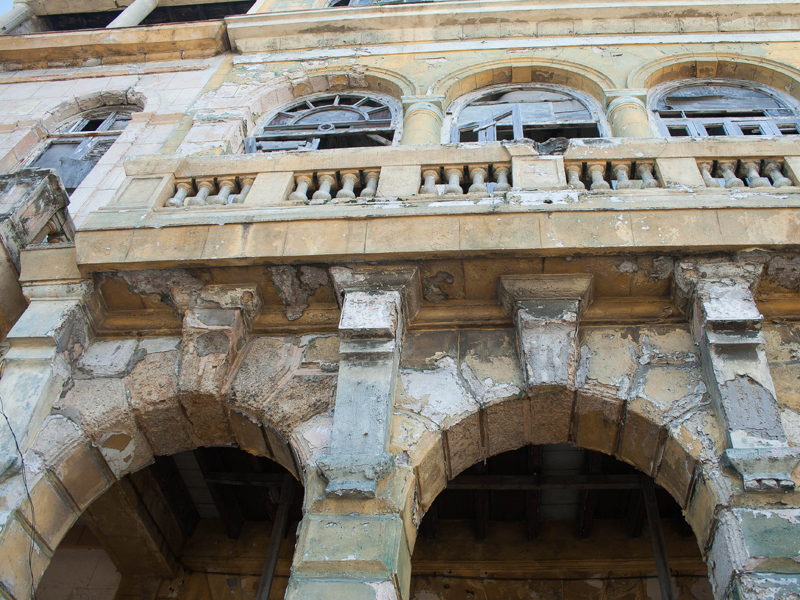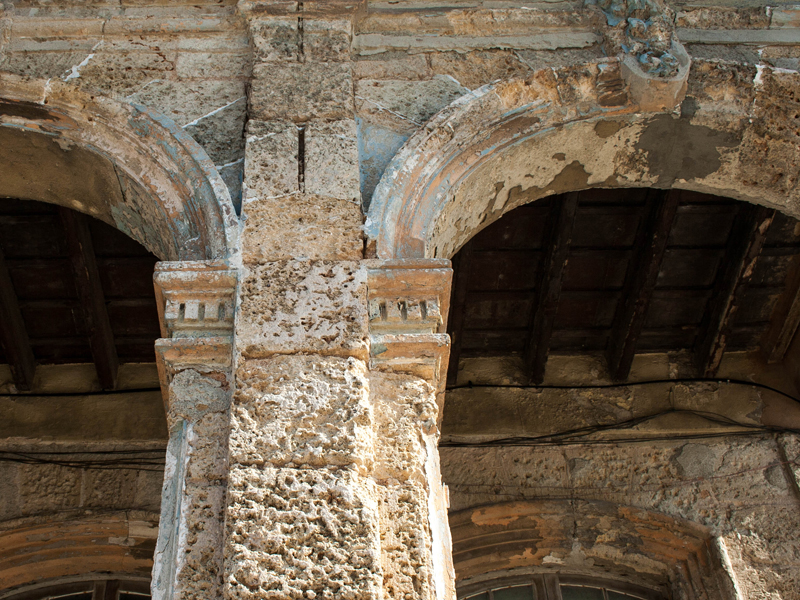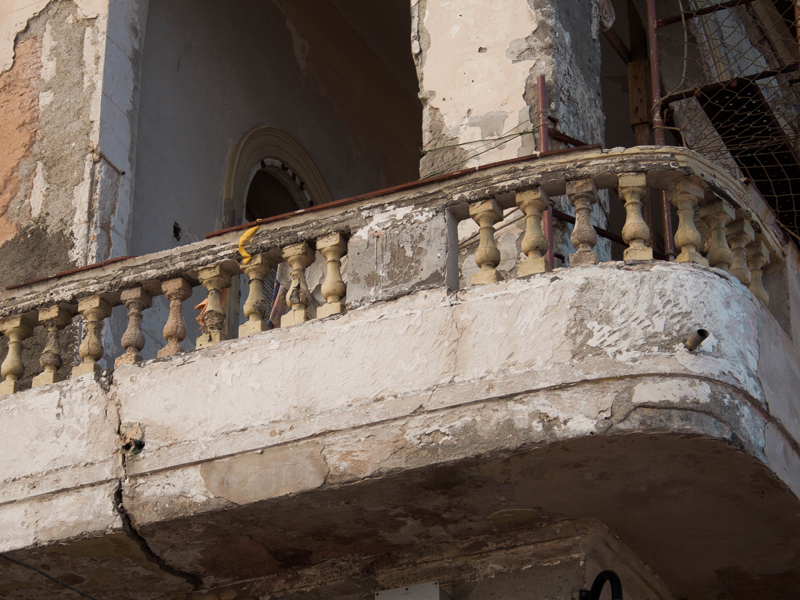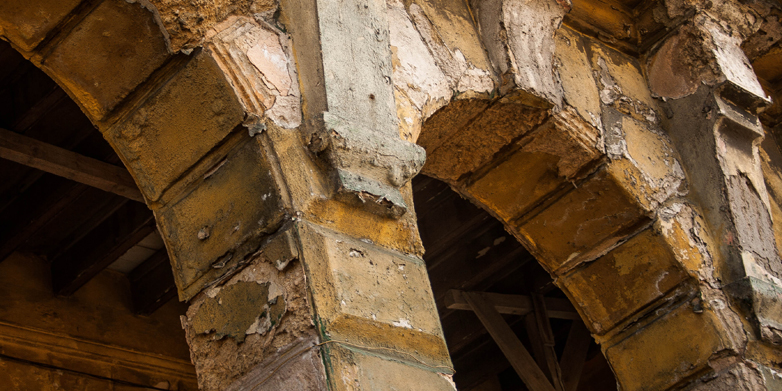How salt causes buildings to crumble
Salt crystals are often responsible when buildings start to show signs of ageing. Researchers from the Institute for Building Materials have studied salt damage in greater depth and can now predict weathering processes more accurately.
Historic stone buildings are tourist magnets. The Jordanian rock city of Petra, the medieval town of Rhodes in the Aegean Sea and the sandstone temples at Luxor, Egypt, for example, attract hundreds of thousands of visitors each year. These cultural assets all have one thing in common: they suffer from weathering caused by salts. These crystallise inside the porous building materials and generate enough force for the stone to break or crumble. The same problem also occurs in concrete buildings in this country. Researchers at the Institute for Building Materials at ETH Zurich and at Princeton University have now conducted an experiment to test the effect of salts under controlled conditions. They are hoping the results will help conservators and restorers of cultural assets to predict the weathering process of buildings.
Salt can enter building materials in a variety of ways, explains Francesco Caruso, a post-doctoral researcher in the group of Robert Flatt, Professor of Building Materials. Cement, for example, a component of concrete, always contains gypsum (calcium sulfate) and alkali sulfates, both of which are salts. Building materials can also be infiltrated by salt from the environment, such as through mineralised ground water close to the surface, which permeates porous building materials through capillary force, or via the atmospheric pollutant sulfur dioxide, which reacts with the calcium carbonate in limestone to form gypsum.
Damage can also be caused by de-icing salt and seawater spray that accumulates on the surface of buildings. “If these salts are dissolved by rain, the saline liquid can enter the building material through pores and cracks,” explains Caruso. The salts crystallise as the liquid dries out and evaporates, causing parts of the stonework to crumble away.
Temperature differences lead to salt accumulation
For their laboratory experiment, the ETH researchers used sodium sulfate, the most destructive salt known and which exists in two forms: anhydrous and hydrated. In several cycles, the researchers placed limestone cubes with a side length of two centimetres into a sodium sulfate salt bath, allowing the salt solution to permeate the pores of the limestone. They then dried the stones at high temperature before placing them in the salt bath again at a lower temperature for the next cycle. During the drying phases, the salt crystallised in the stone’s pores in anhydrous form. In the salt bath phases, the salt solution permeated the pores again and the crystallised salt turned back into a liquid solution.
With this controlled cyclical process, the scientists managed to accumulate a large amount of salt within the stone and create a supersaturated salt solution with respect to the hydrated form. A supersaturated salt solution is a liquid in which, because of special circumstances, more salt is dissolved than would be possible under normal circumstances.
Important findings for restorers
The experiment showed that the greater the supersaturation, the greater the salt’s destructive potential. Temperature also played a role: in cycles in which the temperature never fell below 25˚C, it took an average of four cycles before damage occurred. When the temperature dropped to 3˚C, one cycle was enough. “Although these wet and dry cycles play a part, supersaturation is the most important factor,” explains chemist Caruso.
For a building, this means that if environmental conditions are such that a salt solution repeatedly infiltrates porous stone and the fluid can then evaporate again (e.g. due to strong sunlight or wind), the salt in the building material can become supersaturated. “In these cases, it doesn’t take a lot of salt to inflict considerable damage,” says ETH professor Flatt. However, higher amounts of salt are needed in more moderate environmental conditions.
With this controlled experiment, the researchers have been able to describe the phenomena of salt damage in detailed physico-chemical and mechanical terms for the first time. “We have shown that damage caused by salt can be predicted, at least under controlled conditions,” says Flatt. He believes the experiments may help conservation scientists decide how much salt needs to be removed from a building to avoid damage or – if the salt cannot be removed – to predict when a building might be damaged.
Michelangelo’s frescos and geothermal drilling
This damage caused by salt is not seen only on historic buildings. It is also a problem for wall paintings, such as Michelangelo’s frescos inside the Sistine Chapel in the Vatican, says Caruso. These can be damaged by salt efflorescence in the stonework or the paint layers or in between.
The problem is also visible on a large scale in erosion processes and during geothermal drilling. “Salt damage forms entire rock landscapes,” says Caruso. In 2007, geothermal drilling in the old town of Stauffen, Germany, raised the ground by up to 26 centimetres in places, causing cracks to appear in rows of houses. It was later discovered that due to the underground drilling, groundwater had entered a layer containing calcium sulfate in anhydrous form, which reacted with the water to form gypsum. The supersaturation of this gypsum generated enough pressure to lift the ground.
The researchers at ETH are now planning to use their findings in a project in Havana’s old town, where salt is a major issue. The special render used in restoration work crumbles away from building façades after just a few years, and the aim of the research project is to discover the exact cause. The scientists involved in this research at ETH Zurich and Princeton University are also hoping to find ways to reduce salt damage, such as by changing the pores of building materials on a molecular scale.
Literature reference
Flatt RJ, Caruso F, Aguilar Sanchez AM, Scherer GW: Chemomechanics of salt damage in stone. Nature Communications, Online publication 11 September 2014, doi: external page 10.1038/ncomms5823
Photo gallery: salt crystallisation in Havana’s old town
-

(all photos: Julio Llopiz / ETH Zurich) -

-


Comments
No comments yet